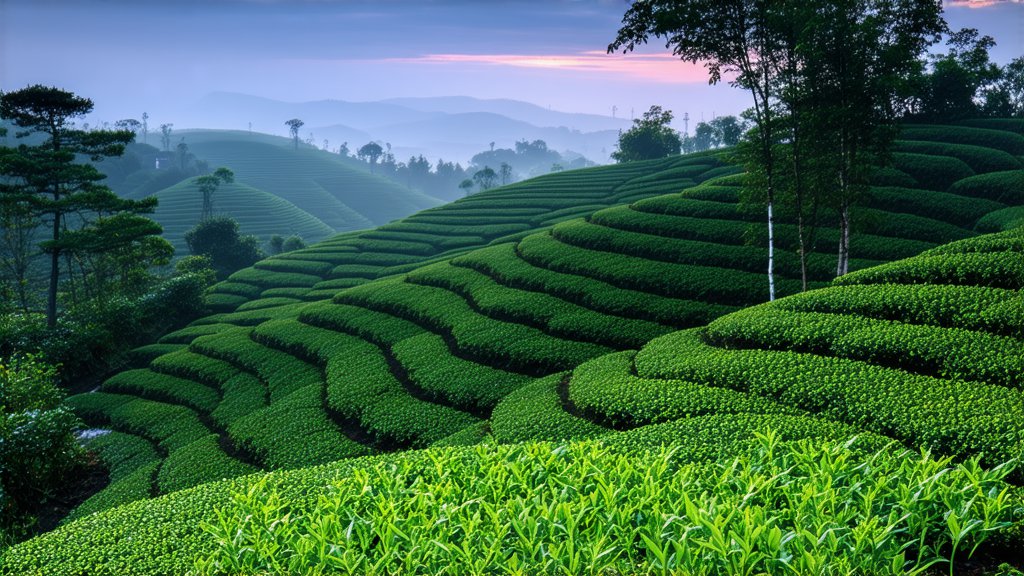
Longjing Tea, often referred to as Dragon Well Tea, stands as a quintessential representation of Chinese green tea culture, embodying centuries of tradition, meticulous craftsmanship, and an unparalleled flavor profile that has captivated tea enthusiasts worldwide. Originating from the lush hills surrounding West Lake in Hangzhou, Zhejiang Province, this exquisite tea variety is not just a beverage; it's a journey through time, nature, and artistry.
Historical Roots
The history of Longjing Tea traces back over 1,200 years to the Tang Dynasty (618-907 AD), though its prominence flourished during the Qing Dynasty when it was named after a legendary dragon residing in a well near the production area. The tale goes that a severe drought struck the region, causing widespread suffering until a benevolent dragon appeared, bringing rain and saving the crops. In gratitude, villagers transformed their finest tea into the shape of dragon claws and named it Longjing, or "Dragon Well," in honor of their savior.
Varieties and Classification
Longjing Tea falls under the category of pan-fired green teas, which sets it apart from other Chinese green teas like those steamed or sun-dried. Within the Longjing family, there are several grades based on the quality and appearance of the leaves:
- Xi Hu Long Jing: The most prestigious, grown around the West Lake area, known for its flat shape resembling a sparrow's tongue and a chestnut-like aroma.
- Hangzhou Long Jing: Cultivated in areas beyond West Lake but still within Hangzhou city limits, offering a slightly different flavor profile while maintaining high quality.
- Zhejiang Long Jing: Produced throughout the broader Zhejiang province, these teas represent good value without compromising too much on taste.
Each grade reflects a unique blend of terroir, cultivation practices, and processing techniques that contribute to the distinct characteristics of Longjing Tea.
Artistry in Processing
The magic of Longjing Tea lies not only in its origin but also in the intricate process by which it is crafted. Harvested typically in early spring, the tenderest buds and leaves are carefully handpicked, ensuring only the freshest and most vibrant parts of the plant make it into the final product. Here’s a glimpse into the traditional processing steps:
-
Fixation: Freshly picked leaves undergo immediate fixation in a wok heated to approximately 200°C (392°F). This step halts oxidation and preserves the green color and fresh aroma.
-
Shaping: Skilled artisans toss and roll the hot leaves between their palms, gradually shaping them into the iconic flat, sword-like form characteristic of Longjing. This step requires precision and experience to achieve the perfect balance between aesthetic appeal and optimal flavor extraction.
-
Drying: After initial shaping, the leaves are dried further at lower temperatures to reduce moisture content, enhance shelf life, and refine the taste. Some masters may repeat the shaping and drying process multiple times to perfect the tea.
-
Sorting and Grading: Finally, the finished tea is sorted based on size, shape, and quality, separating the finest leaves for premium grades.
The Art of Tasting Longjing
Tasting Longjing Tea is an experience that engages all senses. To fully appreciate its nuances, follow these steps:
-
Warm the Teaware: Begin by warming your teapot and cups with hot water to maintain the ideal temperature for brewing.
-
Measurement: Use about 3 grams of Longjing per 150 ml of water. Adjust according to personal preference for stronger or milder flavors.
-
Water Temperature: Heat water to around 80-85°C (176-185°F). Boiling water can scorch the delicate leaves, affecting both taste and aroma.
-
Infusion: Steep the leaves for 1-2 minutes for the first infusion, allowing subsequent infusions to extend gradually as the leaves open up. Longjing can be steeped multiple times, revealing different facets of its flavor profile with each brew.
-
Observation: Notice the bright yellow-green color of the liquor, a testament to the tea's freshness and proper processing.
-
Aroma: Inhale deeply before sipping to detect the tea's chestnut-like fragrance, often accompanied by subtle vegetal notes and hints of sweetness.
-
Taste: Sip slowly, allowing the tea to coat your palate. Experience the initial umami followed by a mellow sweetness and a clean, refreshing finish. The texture should be smooth, with a slight astringency that signals high-quality tea.
-
Appreciation: Take note of not just the flavor but also the overall sensation—how the tea makes you feel, its ability to calm and invigorate simultaneously.
Longjing Tea embodies the essence of Chinese tea culture, where every sip tells a story of harmony between man and nature, tradition and innovation. As you embark on your own exploration of this enchanting green tea, remember that each cup is an invitation to slow down, savor the present moment, and connect with a legacy that spans millennia.